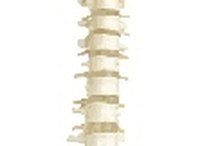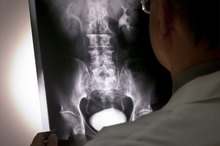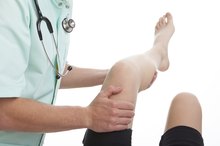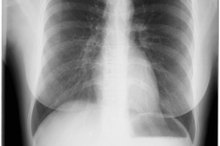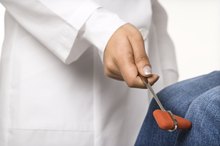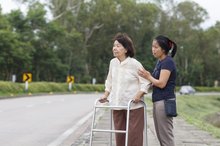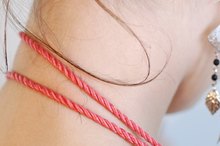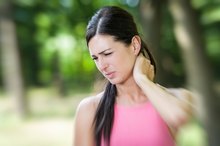Mild Lumbar Scoliosis Symptoms
Lumbar scoliosis is a disorder of the spine in which the lower back, or lumbar area of the spine, is curved to the left or right. This can occur at birth in congenital scoliosis, or in adulthood as a result of neuromuscular disease or another primary disease, but lumbar scoliosis is most commonly idiopathic, or occurring without a known cause. Idiopathic lumbar scoliosis is frequently diagnosed in early to middle childhood and may be known as adolescent idiopathic scoliosis 2.
If you are experiencing serious medical symptoms, seek emergency treatment immediately.
Spinal Malformation
The hallmark symptom of scoliosis is a C (or S when paired with upper back scoliosis) curve shape of the spine instead of a straight line from neck to hip. The curve may be noticed during a chest X-ray for lung infection or injury, or it may be observed during a bend test. For this test, a person touches the ground or toes and the spinal shape can be identified by a doctor to determine which way the curve is shaped. Mild curves of less than 20 degrees of a specialized angle measurement are usually treated only with periodic observation; bracing and surgery are reserved for curves of 25 to 50 degrees.
- The hallmark symptom of scoliosis is a C (or S when paired with upper back scoliosis) curve shape of the spine instead of a straight line from neck to hip.
- The curve may be noticed during a chest X-ray for lung infection or injury, or it may be observed during a bend test.
Muscle and Back Pain
Symptoms of Thoracic Spine Pain
Learn More
Mild scoliosis is primarily painless during childhood and teen years. However, scoliosis that develops in adulthood, or adolescent scoliosis that is untreated by bracing or surgery, may cause chronic pain symptoms. Bone pain may occur from secondary arthritis. Lower-back muscle pain is common, because the muscles that are attached to the curved spine are pulled or pushed out of their normal positions and are continually strained.
- Mild scoliosis is primarily painless during childhood and teen years.
- However, scoliosis that develops in adulthood, or adolescent scoliosis that is untreated by bracing or surgery, may cause chronic pain symptoms.
Uneven Body Alignment
Body sides that appear uneven may be the first sign or symptom of scoliosis in a pain-free child or teen. With lumbar scoliosis, the legs may appear to be different lengths, or one hip may appear higher than the other. This symptom is most noticeable in clothing placement; clothes will seem longer or shorter or will sag and stretch to accommodate the uneven body alignment.
Related Articles
References
- MayoClinic.com. Diagnosis and Treatments: Scoliosis.
- ChiroAccess.com. Clinical Care Overview: Adolescent Idiopathic Scoliosis.
- Hey LA. (2018). Scoliosis in the adult. Atlas SJ, ed. UpToDate. Waltham, MA: UpToDate Inc.
- American Association of Neurological Surgeons. Scoliosis
- Horne JP, Flannery R, Usman S. Adolescent idiopathic scoliosis: diagnosis and management. Am Fam Physician. 2014;89(3):193-8.
- Boston Childlren's Hospital. Congenital Scoliosis
- American Academy of Orthopaedic Surgeons. OrthoInfo. Neuromuscular Scoliosis
- Weill Cornell Medicine. Center for Comprehensive Spine Care. Scoliosis: Symptoms, Types & Treatments
- Wang J, Zhang J, Xu R, Chen TG, Zhou KS, Zhang HH. Measurement of scoliosis Cobb angle by end vertebra tilt angle method. J Orthop Surg Res. 2018;13(1):223. doi:10.1186/s13018-018-0928-5
- Karimi MT, Rabczuk T. Scoliosis conservative treatment: A review of literature. J Craniovertebr Junction Spine. 2018;9(1):3-8. doi:10.4103/jcvjs.JCVJS_39_17
- American Association of Neurological Surgeons. (2019). Scoliosis.
- Children's Hospital of Philadelphia. (2019). Congenital Scoliosis.
- Dewan MC, Mummareddy N, Bonfield C. The influence of pregnancy on women with adolescent idiopathic scoliosis. Eur Spine J. 2018 Feb;27(2):253-63. doi:10.1007/s00586-017-5203-7
- Hey LA. (2018). Scoliosis in the adult. Atlas SJ, ed. Waltham, MA: UpToDate Inc.
- Horne JP, Flannery R, Usman S. Adolescent Idiopathic Scoliosis: Diagnosis and Management. Am Fam Physician. 2014 Feb 1;89(3):193-98.
- Scoliosis Research Society. (2019). Scoliosis.
Writer Bio
Nicole Van Hoey is a pharmacist and medical writer/editor in Washington, D.C. She has worked extensively on National Institutes of Health and trade pharmacy publications and is a contributing textbook writer on topics in infectious disease, nutrition and more. Van Hoey currently enjoys applying her drug information expertise to writings on women's health, complementary medicine and pediatrics.
